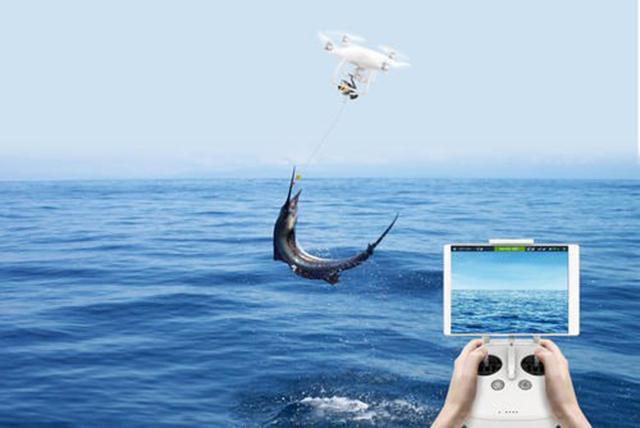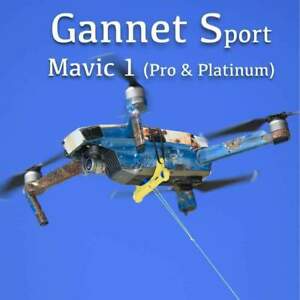
If you are thinking of using a drone to catch fish, it is worth learning more about the regulations. You can also view instructional videos on how you can fly a drone to catch a fish. Read our article about drone ethics if you have any questions. Here are some ethical concerns about drone fishing. Don't forget our guide to drone fishing gear.
Regulations regarding drone fishing
It is possible to wonder what regulations apply when you are watching a YouTube video of a drone fishing for fish. There are many reasons to comply with local laws. But safety is the most important concern. In order to safeguard both you and your fish's lives, it is crucial to ensure that the right laws are followed. This article will provide information on the most important regulations that must be followed. And don't forget to follow the rules of the International Game Fish Association.
Drones are not allowed to operate in public places like stadiums and sporting events. They are not allowed to carry weapons or operate within half a mile from sporting events. Operators of drones must maintain a clear view of their aerial equipment at all time. In addition, drones cannot fly over people, stadiums, or critical infrastructure, as well as be a distraction to emergency response vehicles. You can check with your local law enforcement agency to learn more about drone fishing rules.

While many states have adopted laws governing the use of drones, some states have yet to pass them. Recently, SB 2167 was passed in Illinois. The bill prohibits the use of drones in state parks without permission. It also provides privacy rights as well as outlines the rules and regulations for recreational and commercial drone owners. It also prohibits drones interference with hunters and other wildlife. These new laws should be completed in the next few years.
Ethical concerns about drone fishing
Drone fishing is controversial and not without controversy. Companies sell underwater drones that can fish for fish. These drones can be used to fish for fish. The process of fishing is often captured on video. However, the method of pulling a fish out of the water is somewhat different. If you are ethically concerned about this fishing method, you might consider looking elsewhere for entertainment.
While there are obvious advantages to using drones for fishing, some have argued that they may be cheating the fishing population. The sport of fishing has not changed significantly over the millennia. However, using drones to catch fish could change that and reduce the thrill of it. A drone's use can pose problems for conservation. Here are some of the ethical concerns that you should consider before you decide to use a drone for fishing.

First, drone fishing may not be the best option. Drone fishing can be harmful to the environment and could overfish endangered species. Some states may allow drones to be used in recreational fishing. However, others don't. Drone fishing comes with a few limitations. Cheap drones might not have the required GPS functionality, lifting capacity, or control range. Second, drone fishing can lead to loss of fish if line tangles occur. The third issue is piloting.
FAQ
How can I keep drones off my property?
Drones are becoming more common for home surveillance. However they can also be a threat to privacy or security. If you want drone attacks to be avoided, you can install motion sensors all around your property. These sensors will detect any flying objects that are not authorized.
What is the law about drones flying on private property?
Recently, the FAA issued new rules regarding commercial drone flight. These rules do not apply to UAVs under 55 pounds or flying at less than 400 feet above sea level. Commercial operators need to register with the FAA in order to obtain a license. They also need permission from local authorities when operating near airports or other restricted areas.
What are the rules regarding drone operation?
You need to register your drone with the FAA. This registration involves information such as the weight, size, battery capability, and operating frequency. The FAA will issue you an identification number.
Are drones permissible at public events
Yes, you are free to fly a drone anywhere as long as you follow the rules. If you want to fly your drone in public events like parades, festivals, concerts, etc., you must get permission from the event organizers.
What laws govern flying drones in the United States?
The Federal Aviation Administration (FAA), in the United States, regulates all aspects related to drone operations. The FAA must issue a certificate before you can commercially operate a drone. First, you need to take a course about piloting and pass an exam. You will then need to pay an agency fee.
Can I fly my drone indoors
Yes, it is possible to fly your drone indoors. There are only a few things you need to do: Make sure your home is free of obstacles and hazards. Avoid flying near heating vents, heating vents and air conditioning units.
What is the main difference between a quadcopter or a helicopter?
A quadcopter, a four-rotor helicopter, flies just like a helicopter. It has four rotors which rotate independently. The hexacopter can be described as a quadcopter but has six rotors, instead of the usual four. Hexacopters have more stability and maneuverability than quadcopters.
Statistics
- With the top 10% making over $100/h and the bottom 10% making as low as $10/h. (dronesgator.com)
- According to Indeed, a drone pilot gets paid $25.73 per hour on average in the US. (dronesgator.com)
- Research and Markets predict a growth rate of 51.1% over the next five years. (thedroneu.com)
External Links
How To
How To Fly Drones For Beginners
A drone is a remotely-controlled aircraft that is used for aerial photography and surveillance. Drone technology has been around since World War II. However, commercial use began in 2010 when DJI released their Phantom series of quadcopters. Many types of drones have been made available since then, from beginner-friendly models such as the Parrot AR Drone 2.0, to high-end multi-rotor craft such as the DJI Mavic Pro.
You can fly a drone in many different ways, including:
-
Remote control: This uses a remote control device that attaches to your hand and allows you control the drone along its flight path. There are two main types, On/Off switches (like radios) and joysticks.
-
Manual Control- This allows you to control your drone remotely via GPS coordinates. Follow the instructions of the app to track the exact location you want the drone go.
-
Autonomous Flight – This is when the drone handles all the piloting tasks. It is basically flying autonomously and without human intervention. A drone must have a builtin camera and sensors capable to capture images and other data.
-
Triggered Flight - This method is similar to manual control, except the pilot manually sets up a preprogrammed route, and the drone follows that route until it reaches the endpoint. The drone automatically lands once the route has been completed and returns to the base.
-
Landing Gear- Some drones include landing gear that allows for safe landing if the power goes out or they run out of batteries.
-
Goggles – Pilots often wear goggles while flying to keep themselves safe from any debris.
-
Camera - You can capture photos and videos with your drone from the air.
-
Obstacles – Some drones have obstacle avoidance systems that stop them from colliding with obstacles.
-
Speed - Some drones can reach speeds of over 40 mph.
-
Battery Life: Most drones have a battery life of between 20 and 30 minutes depending on how many power sources you use.
-
Some drones have a range of up to 30 miles, depending on their model.
-
Power source: Some drones will require an external power source while others can be powered by internal batteries.
-
Weight - Some drones weigh less than 1 pound, whereas other models weigh up to 4 pounds.
-
Size - Drones come in many sizes, from small gadgets that fit in one's hands to large craft that weigh more than 50 lbs.
-
Price - Drones come in a variety of price categories, including high-end models which can run into the thousands and low-cost options that can start at $100.